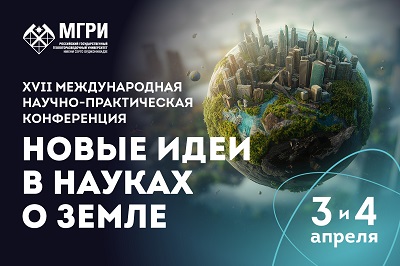On methodology and methods of applied geomagnetism
Abstract
About the Author
V. V. AksenovRussian Federation
References
1. Аксёнов В.В. Электромагнитное поле Земли. Новосибирск: Изд-во СО РАН, 2010. 269 с.
2. Аксёнов В.В. Об источниках главного геомагнитного поля. Ч. 2 // Изв. вузов. Геология и разведка. 2012. № 5. С. 54-60.
3. Аксёнов В.В. Основы геомагнетизма. Новосибирск: Изд-во ИВМиМГ СО РАН, 2012. 133 с.
4. Аксёнов В.В. О некоторых соленоидальных векторных полях в сферических областях // Дифференциальные уравнения. 2012. Т.48. № 7. С. 1056-1059.
5. Аксёнов В.В. Тороидальные электрические токи спокойных солнечно-суточных вариаций, применяемых в глубинной электроразведке // Изв. вузов. Геология и разведка. 2014. № 2. С. 45-54.
6. Аксёнов В.В. Моделирование тороидальных и полоидальных электромагнитных полей // Математическое моделирование. 2014. Т. 26. № 5. С. 3-24.
7. Аксёнов В.В. Моделирование магнитного поля источников, находящихся в шаре и вне его // Математическое моделирование. 2015. Т. 27. № 8. С. 111-126.
8. Аксёнов В.В. Тороидальное разложение векторного потенциала магнитного поля и его приложения // Вестник МГУ. Серия 3. Физика. Астрономия. 2015. № 6. С. 128-134.
9. Аксёнов В.В. Электродинамика наблюдаемого на Земле естественного электромагнитного поля // Изв. вузов. Геология и разведка. 2016. № 2. С. 50-60.
10. Аксёнов В.В. Несиловые и силовые электромагнитные поля // Изв. вузов. Физика. 2016. Т. 59. № 3. С. 3-10.
11. Аксёнов В.В. Несиловые и силовые электромагнитные поля в теории и приложениях. Сборник опубликованных авторских статей (23 един.) // [Электронный ресурс]. http:// icmmg.nsc.ru ИВМиМГ - дата обращения 21.10.2016.
12. Бенькова Н.П. Спокойные солнечно-суточные вариации земного магнетизма. М.-Л.: Гидрометеоиздат. 1941. 79 с.
13. Кауллинг Т. Магнитная электродинамика. М.: Атомиздат. 1978. 96 с.
14. Моффат Г. Возбуждение магнитного поля в проводящей среде. М.: Мир, 1980. 339 с.
15. Паркер Ю. Космические магнитные поля. В двух томах. М.: Мир. 1982. 1080 с.
16. Паркинсон У.Д. Введение в геомагнетизм. М.: Мир, 1986. 527 с.
17. Соколов Д.Д., Степанов Р.А., Фрик П.Г. Динамо на пути от астрофизических моделей к лабораторному эксперименту // УФН. 2014. Т. 184. № 3. С. 313-335.
18. Четаев Д.Н. О структуре поля короткопериодической геомагнитной вариации и магнитотеллурическом зондировании // Физика Земли. 1970. № 2. С. 52-55.
19. Яновский Б.М. Земной магнетизм. М.: ГИТТЛ. 1953. 591 с.
20. Яновский Б.М. Земной магнетизм. Часть 1, 2. Л.: ГИТТЛ. 1978. 591 с.
21. Alfven H. Cosmically Electrodynamics. Oxford: University Press, 1950. 240 p.
22. Chandrasekhar S. Hydrodynamic and Hydro magnetic Stability. Oxford: Oxford University Press. 1961.
23. Gauss K.F. Allgemaine Theorie des Erdmagnetismus // Werke. 1838-1839. T. 5. S. 119.
24. Gauss K.F. Allgemaine Lehrsatze in Beziehungauf die in verkenrten verhaltnisse des Quadrats der Entferung Wirkenden Anziehung und Abstossungkrafte // Werke. 1939-1940. T. 4. S. 195.
25. Larmor J. How could rotating body such as the Sun become a magnet // Rep. Brit. Assoc. SCL. 1919. P. 60-159.
26. Radler K.-H. On the electrodynamics of turbulent fluids under the influence of Coriolis forces // Monads. Dt. Acad. Wiss. 1969. P. 194-201.
27. Steenbeck M., Krause F. On the dynamo theory of stellar and planetary magnetic field I.A.C. dynamos of solar type // Astron Nachr. 1969. P. 49-84.
28. Van Vleuten A. Over de dagelijksche Variatie van het Ardmagnetism - Utrecht: Koninklijk Ned. Meteor. Instit. 1917. P. 25-30.
Review
For citations:
Aksenov V.V. On methodology and methods of applied geomagnetism. Proceedings of higher educational establishments. Geology and Exploration. 2016;(6):50-55. (In Russ.)








































